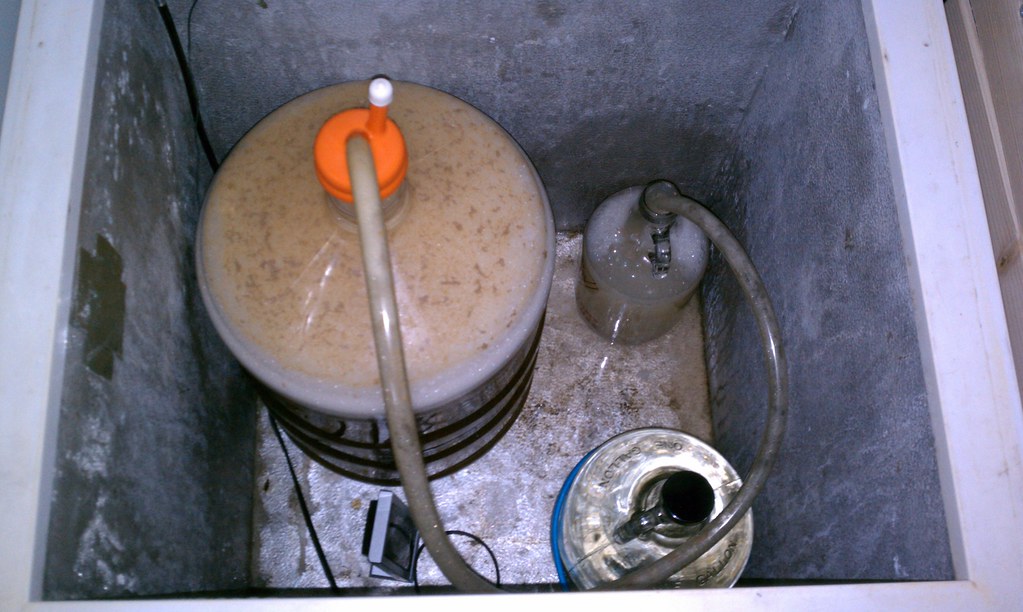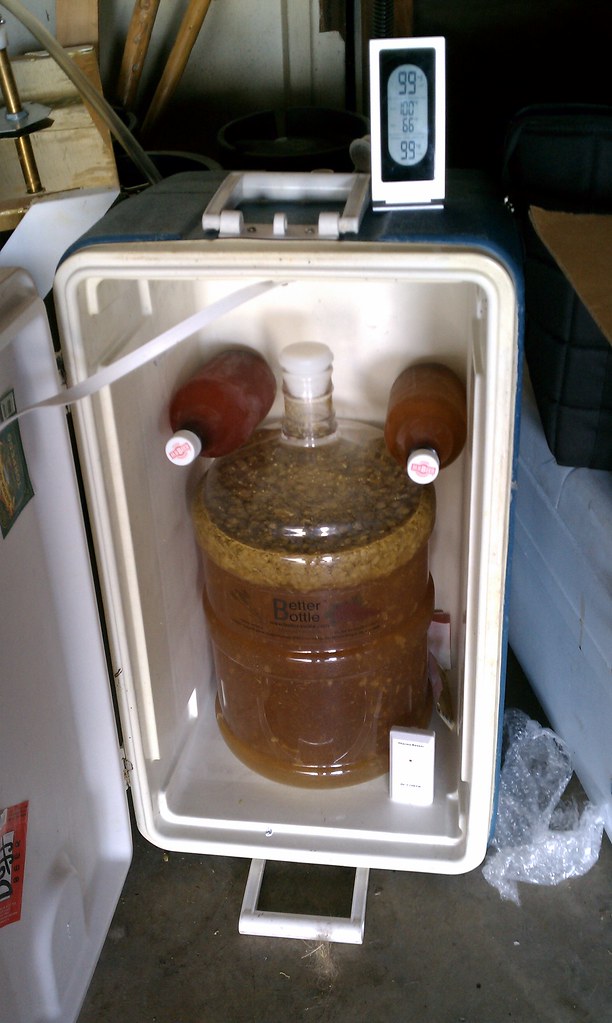I recently put together a presentation for the AHP Brewclub at Addison Homebrew Provisions on the
benefits of temperature control on fermentation. This is the core of
that presentation with some minor changes
 |
| The Inside of my Fermenting Cube |
A recent reader poll on the Mad Fermentationist
found the most important investment brewers could make is Fermentation
Temp Control. I definitely agree that it is one of the best investments I
have made in brewing. Let’s face it yeast like a nice stable
environment to do its job and when it’s not happy it will let you know
in both off flavors and aromas.
Here’s a quick list of issues that can occur without controlling temperature (sourced from How to Brew).
Alcoholic: Overpowering alcohol flavor, bitter, acetone, paint thinner, spicy, sharp, undesirable
“hot” sensation in the throat fermenting at temperatures exceeding 80ºF
Estery/Fruity: Fruit, especially banana, to a lesser extent, pear, strawberry, raspberry, grapefruit. Fermenting over 75ºF has been shown to drastically increase these esters.
Solvent-like: This group of flavors is very similar to the alcohol and ester flavors, but are harsher to the tongue. These flavors often result from a combination of high fermentation temperatures and oxidation
Temperature
control also allows a brewer to have the ability to brew what they want
when they want, ie ales in the winter, lagers in the summer. I like to
do a lot of lager beers and without the use of my converted deep freeze I
wouldn't have the range and accuracy I want to brew them to the standards I
want.
What are we trying to control?
 |
| A Poor Man's Fridge |
Before
we move forward we need to understand what we are trying to control;
the environment temperature (ambient room temperature) or the
temperature of the fermenting beer. For the most part we are going to
be trying to control the temperature of the fermenting beer but
adjusting the temperature of its environment. Active fermentation can
cause the beer to be 5-10 degrees warmer than its surrounding
environment. There are a few ways in which we monitor this.
1) Crystal Thermometer – Similar to one you would find on a fish tank this measures the temperature of the liquid it is attached to. AHP carries ones specifically for beer that measures into the lager range.
2) Thermowells + Thermometer – Typically these are stainless tubes built into stopper bungs that always you to take a center of the liquid temperature method but inserting a thermometer into the tube. Certain types for temperature controllers can have their probe inserted into the thermowell allowing you to control the liquid temperature instead of the environmental temperature.
3) Infrared Thermometer – A small hand held device that takes the surface temperature of the object scanned.
In all these cases (except when using a temperature controller inside a thermowell) you are taking the temperature of the fermenting beer with the understanding that you will be adjusting the temperature of the control up or down to reach the desired fermenting temperature
Types of Temperature control methods
This
section is going to talk about and explore the various methods for
controlling the fermentation temperature of the beer. It is divided
into three sections; cold, hot and both.
The key to
almost anything that requires electricity is a temperature controller
that basically turns off power to the motor once it hits a curtain
range. Most are meant to turn off once it gets cold but there are
several versions that can control heat sources as well.
 |
| Johnson Analog Temperature Controller |
Cold
Wet T-Shirt – Probably one of the cheapest and easiest options for cooling the beer, it does this through evaporation cooling.
Temp Controlled Fridge/Freezer – In this design an ordinary fridge, freezer or chest freezer is controlled via a temperature control to a desired temperature range.
Cold Box – is pretty much an insulated box that gets its cold air from an external source such as a window AC or a freezer. Generally they are still controlled by a temperature control
Hot
Brew Belt – attached to a fermenter can raise the temperature 10 degrees above ambient. Note: The manufacturer warns against putting it on a glass fermenter.
Ceramic Heat Lamp – in a closed environment can raise the temperature. You want to go with a ceramic heater as incandescent heaters usually include UV rays (both A&B) that can isomerized the hops leading to
skunky/musty aromas similar to burned rubber or cat musk
Both
Water
Bath – a tub filled with water in which you place your fermenter into.
It works through a liquids desire to reach temperature equilibrium
therefore exchanging heat between the water bath and the fermenter.
Temperature can be lowered by adding ice or frozen water bottles to the
water and raised by adding hot water bottles or through the use of an
aquarium heater.
Cooler/Poor
Man’s Fridge – a simple beverage cooler turned on its
side. Temperature can be lowered by putting frozen water bottles on the
neck of the fermenter and raised by using hot water bottles. Keep the
cooler door/lid closed.
The
Fermenting Cube – I use a combination of a converted deep freeze hooked
up to an analog controller and a brew belt on a gallon water jug to
maintain the temperature both up and down on my fermenting cube.
I hope this helps and provides good ideas
Cheers
-SNB

Great presentation last night by the way.
ReplyDeleteThanks Scotty! You even did it while ill...that's dedication.
ReplyDelete